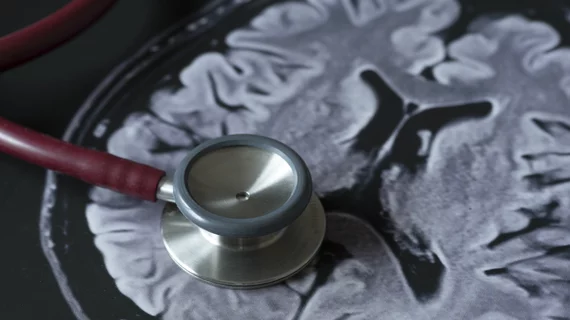Patients with Alzheimer’s disease and dementia are making fewer visits to the emergency department, yet imaging rates among these individuals are steadily climbing, according to a new analysis published Wednesday.
It’s true such patients are more frequently admitted to the ED compared to other populations, and estimates predict the worldwide number of dementia diagnoses to keep climbing, expected to reach 135 million by 2050, researchers wrote in AJR.
But between 2006 and 2014, emergency visits dropped by at least 20% for the more than 450,000 people diagnosed with one of these brain disorders included in the study. And at the same time, head computed tomography and brain MRI utilization increased among AD and vascular dementia patients, with CT showing a “significant” jump.
Emory University researchers found imaging was not evenly dispersed across the cohort. Geographic location, hospital type, patient ZIP code, and more were all factors, pushing the authors to call for change.
“In practices with higher utilization rates than average, there is a potential for unnecessary resource use and spending without a corresponding improvement in outcomes, whereas practices with lower utilization rates than average raise questions about underutilization of resources and potential for lower care quality,” Gelareh Sadigh, MD, with the Atlanta institution’s school of medicine, and colleagues added. “Policy efforts should focus on standardizing and reducing variation in imaging use across different practice settings.”
The group’s results are strengthened by their use of the largest publicly available all-payer ED database, accounting for 30 million emergency visits across nearly 1,000 hospitals. Upwards of 427,000 AD patients and 33,000 with vascular dementia were also included.
Over the study period, ED visits declined by 24.7% among Alzheimer’s cases and 20.3% across vascular dementia patients. Meanwhile, head CT jumped from 4.4% to 11.1% in those with AD and rose from 1.5% to 2.9% in dementia patients.
Brain MRI rates also increased, rising from 0.04% to 0.5% in Alzheimer’s disease and 0% to 0.1% among emergency dementia visits, the authors reported.
Sadigh discussed possible reasons for their findings at length. They noted CMS policy in 2009 to publicize readmission rates and penalize hospitals, among other factors, may have led to drops in ED visits. Such efforts may have also led to higher imaging use, they noted, as these exams enhance providers’ decision-making abilities.
Imaging rates were far from uniform across patients. In those with Alzheimer’s, age, median income within ZIP code, day of the week, hospital teaching status, and ED location were all predictors of utilization. And in dementia patients, insurance type and urban versus rural hospital were highly suggestive of neuroimaging use.
“Disparities according to socioeconomic characteristics, such as income or insurance, highlight a critical gap in access to care and possible biases in provider ordering behaviors,” the group concluded. “By recognizing such biases in how imaging is ordered, efforts can be made to allow clinicians to provide more objective, evidence-based practices when deciding to incorporate imaging in patient care.”
Read the entire study published March 17 in the American Journal of Roentgenology here.

